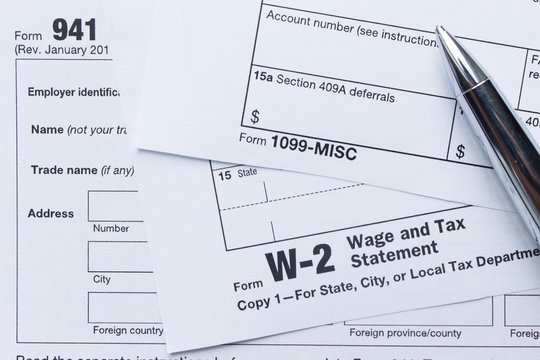In today’s gig economy, more and more people find themselves juggling multiple jobs and contracts. While this flexibility can be liberating, it also comes with its own set of challenges—particularly when it comes to understanding your employment classification. Are you a contractor or an employee? The difference between a 1099 and a W2 isn’t just paperwork; it can affect your taxes, benefits, and legal protections.
Understanding the Basics
Before we dig deeper, let’s clarify what a 1099 and a W2 are. A 1099 form is used to report various types of income other than wages, salaries, and tips. If you’re working as a freelancer or independent contractor, you’ll receive a 1099. On the other hand, a W2 form is used by employers to report wages, tips, and other compensation paid to employees. If you’re a regular employee, you’ll get a W2.
Why Classification Matters
Your classification as either a 1099 contractor or W2 employee affects several aspects of your work life. For instance, employees often enjoy benefits like health insurance, retirement plans, and paid leave, which are typically not available to contractors. Financially, misclassification can also impact how much taxes you owe and how you file them.
The Legal Landscape
Misclassification isn’t just an inconvenience; it’s illegal. The Fair Labor Standards Act (FLSA) and various state laws have provisions to protect workers from being misclassified. Employers might opt to misclassify employees to avoid paying payroll taxes or providing benefits, but doing so can result in hefty fines and penalties.
Key Differences Between 1099 and W2
Tax Implications
One of the main differences between being a 1099 contractor and a W2 employee lies in taxes. Employees have their taxes withheld by their employers, while contractors are responsible for handling their own tax payments. This means setting aside money for federal, state, and possibly local taxes.
Benefits and Protections
W2 employees generally have access to various benefits like health insurance, retirement plans, and paid time off. Contractors, however, do not typically receive these benefits and must provide for their own insurance and retirement savings.
Work Control and Independence
Contractors usually have more control over how they complete their work. They can often set their own hours and use their own tools and resources. Employees, on the other hand, are usually required to follow company policies and schedules.
Signs You Might Be Misclassified
Lack of Benefits
If you’re working full-time hours but aren’t receiving benefits like health insurance, you might be misclassified. Employers often misclassify workers to avoid the cost of providing these benefits.
Employer Controls Your Work
If your employer dictates your work schedule, provides the tools or equipment you need, and closely supervises your tasks, you may be functioning more like an employee than a contractor.
Long-Term Relationship
Contractors are typically hired for specific projects or periods, whereas employees often have a more indefinite relationship with their employer. If you’ve been working for the same company for years without a formal employment contract, you might be misclassified.
How to Address Misclassification
Talk to Your Employer
Sometimes, misclassification happens unintentionally. Start by discussing your concerns with your employer. They may not be aware that you’ve been misclassified and could be willing to rectify the situation.
Seek Legal Advice
If talking to your employer doesn’t resolve the issue, consider seeking legal advice. Organizations like the Department of Labor (DOL) and the National Employment Law Project (NELP) provide resources and can help you understand your rights.
File a Complaint
You can file a complaint with the DOL or your state labor office if you believe you’re being misclassified. These organizations can investigate your claim and take action against employers who are breaking the law.
The Benefits of Proper Classification
Financial Security
Being properly classified as a W2 employee can provide you with financial security. You’ll have access to benefits and protections that can help you manage unexpected expenses like medical bills or job loss.
Peace of Mind
Knowing that you’re correctly classified can give you peace of mind. You won’t have to worry about potential legal issues or surprise tax bills from the IRS.
Better Work-Life Balance
Employees often have access to paid time off and other benefits that can help them maintain a healthy work-life balance. Contractors, on the other hand, may find it harder to take time off or plan for the future.
Common Misconceptions
“I Don’t Pay Taxes as a Contractor”
Many people mistakenly believe that contractors don’t have to pay taxes. In reality, contractors are responsible for paying both the employee and employer portions of Social Security and Medicare taxes.
“Contractors Have No Rights”
While contractors don’t have the same protections as employees, they still have rights. For example, they can negotiate contracts, seek legal remedies for breaches, and are protected from discrimination.
“Employees Can’t Have Flexible Schedules”
Some people think that only contractors can enjoy flexible schedules. However, many employers offer flexible work arrangements to W2 employees, especially in today’s remote work environment.
Misclassification as a 1099 contractor when you should be a W2 employee can have significant implications for your finances, benefits, and legal protections. Understanding the differences between these classifications and knowing the signs of misclassification can empower you to take action.
If you suspect you’ve been misclassified, don’t hesitate to discuss it with your employer or seek legal advice. Proper classification ensures that you receive the benefits and protections you’re entitled to, providing financial security and peace of mind.
For more resources and personalized advice, consider signing up for our newsletter or contacting a labor rights organization. Your work matters, and so do your rights.
